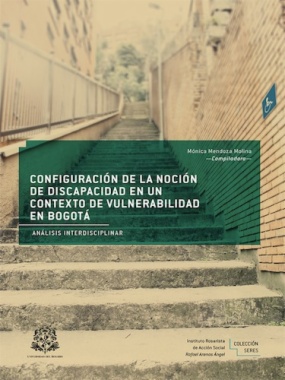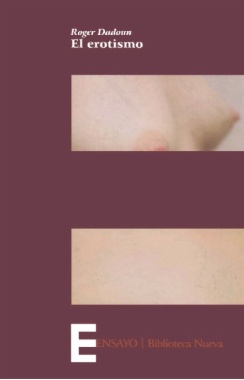Por:
Federico Rivas Frade
|
"X. Y. Z" fue una publicación que circuló en Bogotá entre 1907 y 1909. Este periódico fue fundado dos años y medio después de que iniciara la presidencia de Rafael Reyes. Desde su primer número, se caracterizó por ser un periódico de defensa de la Administración Reyes (1904-1909), a la que los directores le atribuían la época de paz y tranquilidad al inicio y desarrollo de su mandato, y que además, apoyaban desde su periódico con el objetivo de "…servir al país, predicar la concordia entre los colombianos y apoyar al Gobierno en la labor benéfica y patriótica que se había emprendido para reconstruir el país". Fue una publicación de espíritu liberal que se aproximó ideológicamente a los conservadores en aras de la legitimación, propaganda y fortalecimiento político de la imagen de Reyes durante esos años.
En el número 1 del periódico los directores explican que la publicación se denominó "X. Y. Z" en homenaje al político y escritor liberal Miguel Samper, quien firmaba algunos de sus artículos bajo ese seudónimo. Este periódico se pensó como un periódico clásico a cinco columnas y con una frecuencia bisemanal, que se publicaría generalmente los días miércoles y sábados, sin embargo, su frecuencia fue irregular y osciló entre dos y tres números semanales. En algunos meses, por ejemplo, la publicación salía los martes, jueves y sábados o solo estos dos últimos días. Durante sus dos años y tres meses de existencia, se editaron y publicaron 4 series de 50 números y un ejemplar extraordinario, es decir 201 periódicos. La publicación tuvo tres etapas editoriales: la primera, a cargo de sus fundadores Federico Rivas Frade y Gabriel Roldán, quienes dirigieron juntos hasta el número 70. Posteriormente, y debido al viaje al exterior de Rivas Frade, Roldán se quedaría como director exclusivo hasta el no. 100. Finalmente, en marzo de 1908, la publicación fue asumida en el no. 101 por Rafael Espinosa Guzmán quien realizó una variación en el título, denominándolo en el no. 106 como: "X. Y. Z. Bisemanario Liberal", y quien también aumentaría los precios de venta y suscripciones de la publicación.
Uno de los objetivos principales de la publicación fue generar un mayor alcance de circulación en diferentes clases sociales del país (obreros, vendedores, artesanos, modistas, emboladores, entre otros), esto explica por qué en la parte superior derecha del cabezote se caracteriza como "Lectura Popular". En términos económicos el costo del ejemplar era barato, pues se decidió privilegiar la pauta publicitaria como mecanismo de sostenimiento y financiación en vez de enfocarse en el costo de venta del ejemplar. Convencionalmente se imprimían 5.000 ejemplares, pero en fechas especiales la impresión llegó a alcanzar los 20.000 números de tiraje. Esto explica también el diseño que caracterizó al "X. Y. Z", que generalmente se estructuró en dos páginas de publicidad (páginas 1 y 4) y dos páginas de contenido político y económico (páginas 2 y 3), aunque fieles a su idea inicial, se pueden identificar varios números que alcanzaron a utilizar cerca de 2 páginas y media de anuncios publicitarios. Dentro de la parte "periodística" o de contenido, se destacan dos secciones que permanecieron de inicio a fin: la sección editorial, que se planteó en un estilo de "editoriales dialogadas" o auto entrevistas donde sus directores planteaban diferentes puntos de vista frente a la política y economía en vigor; y la sección "De todo", que incluyó diferentes noticias de formato corto (3 líneas o 5 líneas), en donde se daba una revista miscelánea de distintos acontecimientos, como por ejemplo: venta de tierras, nombramientos, conmutaciones de penas capitales, aparición de marcas, consejos médicos, licencias, noticias internacionales, desarrollo de transporte, comportamiento de empresas, entre muchos otros temas. Dentro de esas dos páginas de contenido, también fue usual encontrar publicaciones de discursos presidenciales o del gabinete de ministros, edictos, decretos y resoluciones emitidas por el Gobierno; además de algunas composiciones literarias, que generalmente se presentaron en el género literario de poesías en cuartetos, quintetos o rimas libres.
Las temáticas preponderantes de "X. Y. Z" estuvieron alrededor de tres temas claves, la gestión política-administrativa, la evolución económica del país y la resolución de los temas internacionales alrededor de límites de fronteras y negociación con los países vecinos. Los temas específicos que dominaron las páginas de la publicación durante sus años de existencia fueron: discusiones sobre la libertad de prensa, evolución de la instrucción pública y creación de las escuelas nacionales de artesanos, temas médicos relacionados con la lepra, los lazaretos y las regulaciones en el país, síntesis de las exposiciones pecuniarias, agrícolas e industriales entre 1907 y 1908. De la misma manera, se incluyeron temas relacionados con celebraciones religiosas (aniversarios del Papa Pío X, fiesta de San Rafael Arcangel, entre otras), el estado de las rentas nacionales, la crisis económica y fiscal de la Nación, la firma del tratado limítrofe entre Brasil y Colombia por los ministros plenipotenciarios de los Estados Unidos del Brasil, Enéas Martins, y de Colombia, Alfredo Vásquez Cobo, el 24 de abril de 1907, así como también las comisiones para solucionar los problemas limítrofes con Venezuela, la iniciativa de desarrollar una industria bananera en la Costa y el restablecimiento de las relaciones, indemnización y acuerdos entre Estados Unidos, Colombia y Panamá después de la separación y debates derivados de las diferentes perspectivas sobre la perdida de este territorio. La edición especial de los números 162 a 166, da una muestra de ello pues se aprecian las posturas de Carlos José Espinosa y Lorenzo Marroquín al respecto. En el declive de la administración de Rafael Reyes, la publicación finaliza dando la bienvenida al país a Jorge Holguín Mallarino, quien era parte del gabinete del presidente y en el marco de la crisis se advertía como una opción política a la crisis.
Fuente:
Biblioteca Virtual Banco de la República
Formatos de contenido:
Prensa




